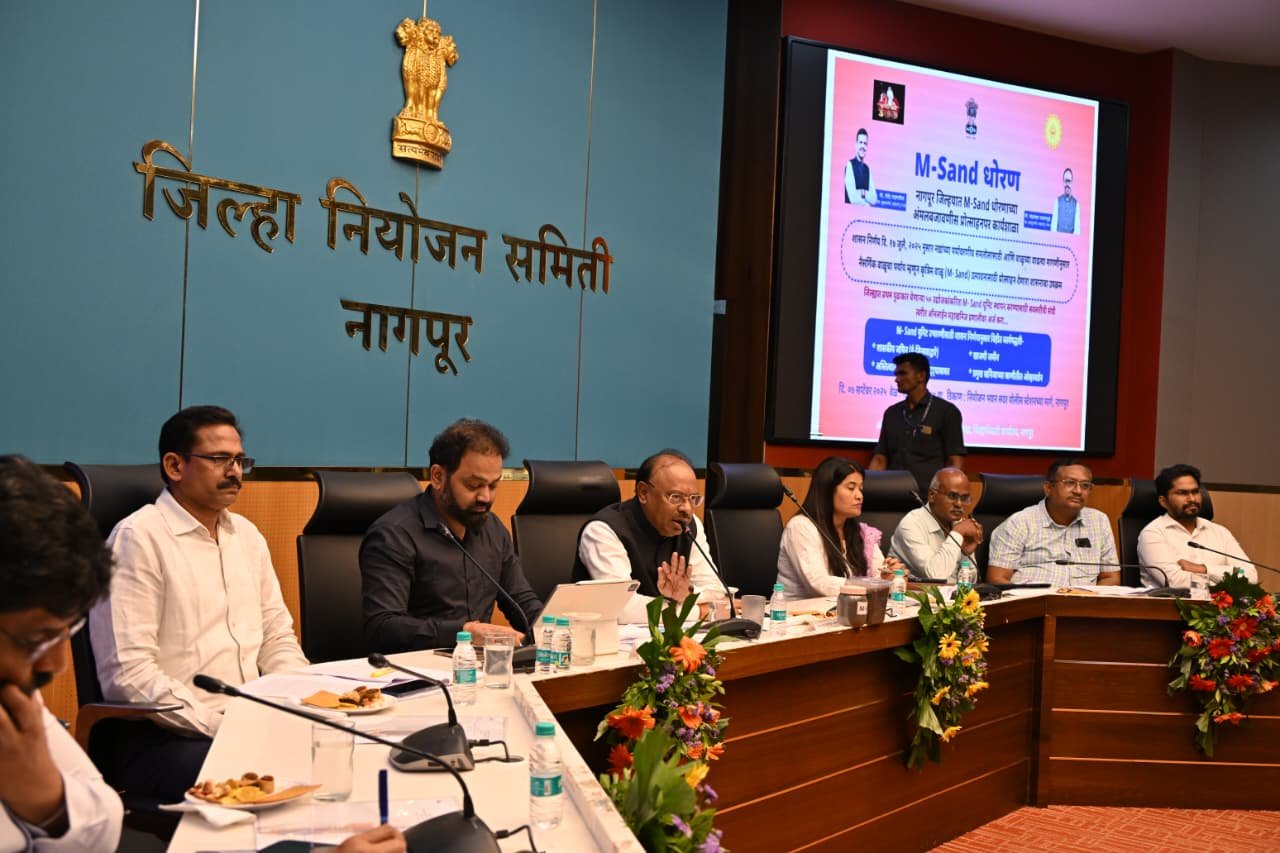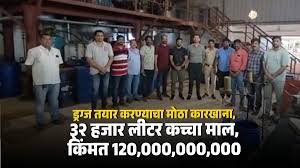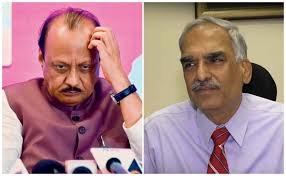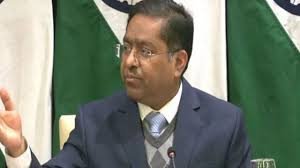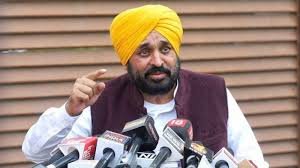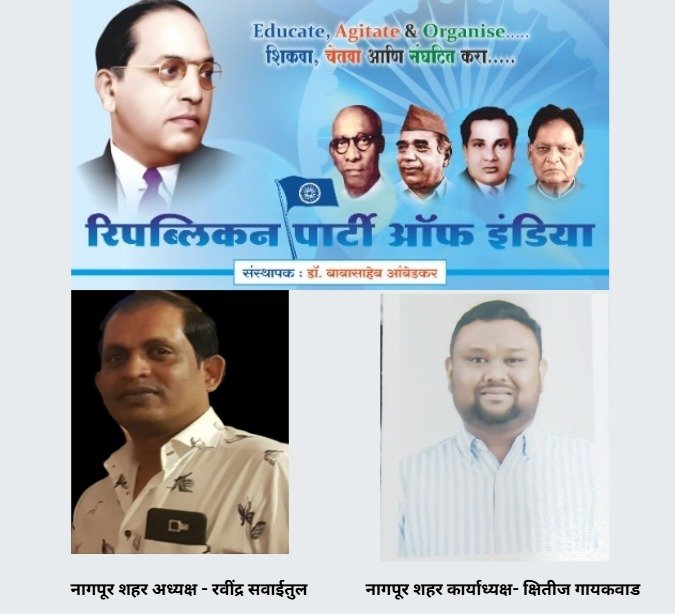
Maharashtra Ready with 'Vision of Development and Heritage' to Achieve the Goal of 'Viksit Bharat 2047'
Maharashtra Ready with 'Vision of Development and Heritage' to Achieve the Goal of 'Viksit Bharat 2047'
ΓÇô Chief Minister Devendra Fadnavis
New Delhi, May 24: To achieve the goal of a ΓÇÿDeveloped India by 2047,ΓÇÖ Maharashtra is fully prepared to implement its ΓÇÿVision of Development and HeritageΓÇÖ alongside the central government and all other states, said Chief Minister Devendra Fadnavis today. He also assured that by 2030, 52% of the stateΓÇÖs required energy will be generated from green sources. He was speaking at a meeting organized by NITI Aayog.
CM Fadnavis highlighted the consistent support received from Prime Minister Narendra Modi for MaharashtraΓÇÖs projects, schemes, and initiatives, and expressed gratitude for the cooperation from various departments of the central government.
At the beginning of his speech, he thanked and congratulated the Indian Armed Forces and Prime Minister Modi for the successful execution of ΓÇÿOperation SindhurΓÇÖ.
In the meeting, the Chief Minister outlined MaharashtraΓÇÖs future roadmap. He said energy purchase agreements for 45,500 MW have been signed, of which 36,000 MW is green energy. By 2030, 52% of the stateΓÇÖs energy will come from green sources. Under the Chief MinisterΓÇÖs Solar Agricultural Feeder Scheme 2.0, projects with a capacity of 16,000 MW have been launched across 10,000 agricultural feeders, and 1,400 MW of projects are already operational. By December 2026, 100% of farmers in the state will have access to daytime electricity, all of which will come from solar projects. The Saurgram (Solar Village) Scheme has been implemented in 100 villages, with 15 villages already fully solar-powered. A new policy for pumped storage power has been introduced, with 15 agreements signed for 45 such projects. These projects will generate a combined capacity of 62,125 MW, attract ?3.42 lakh crore in investment, and create 96,190 jobs, Fadnavis stated.
Following national policy, Maharashtra is also drafting its Vision Maharashtra 2047 in three phases, said the CM. He mentioned that the government undertook a 100-day program based on the principles of good governance, citizen-centric reforms, and accountability, during which over 700 targets were achieved by various departments. Now, a 150-day action plan is underway, with a long-term vision for 2047, a medium-term plan for 2035 (during the stateΓÇÖs Amrit Mahotsav), and a short-term 5-year plan for 2029 with annual targets. The goal is to transform MaharashtraΓÇÖs economy into a $1 trillion economy by 2030 and $5 trillion by 2047.
Highlighting Maharashtra as IndiaΓÇÖs top investment magnet, CM Fadnavis said the state attracted ?1.39 lakh crore in foreign direct investment (FDI) in the first quarter of 2024ΓÇô25 ΓÇö the highest in the country. At the Davos World Economic Forum, MoUs worth ?15.96 lakh crore were signed, 50% of which are already being processed. Most of these investments are going into Tier-2 and Tier-3 cities. Under NITI AayogΓÇÖs guidance, the Mumbai Metropolitan Region (MMR) is being developed as a growth hub, with a target of becoming a $1.5 trillion economy by 2047. He urged the central government for special financial support for this initiative. To promote industrial growth in Tier-2 and Tier-3 cities, he said initiatives are underway to develop: Gadchiroli as a Steel City, Nagpur as a Defense Hub, Amravati with a Textile Cluster, Chhatrapati Sambhajinagar for EV manufacturing, Auric City in Raigad's Dighi region as a Smart Industrial City.
Fadnavis also emphasized Maharashtra's leadership in the MSME sector, with over 60 lakh MSMEs registered on the national portal ΓÇö the highest in India. Through Ease of Doing Business reforms and the Chief Minister Employment Generation Program, 2 lakh entrepreneurs have benefited. He further mentioned MoUs worth ?5,000 crore signed during the recent WAVES Summit in Mumbai for two global studios. Additional highlights include: Establishment of IICT in Mumbai, Launch of WAVES Index on the NSE, Partnerships with the University of York and the University of Western Australia
Finally, CM Fadnavis expressed confidence that Maharashtra will receive the central governmentΓÇÖs guidance and financial support for the upcoming Nashik Kumbh Mela 2027.
Maharashtra Ready with 'Vision of Development and Heritage' to Achieve the Goal of 'Viksit Bharat 2047'
ΓÇô Chief Minister Devendra Fadnavis
New Delhi, May 24: To achieve the goal of a ΓÇÿDeveloped India by 2047,ΓÇÖ Maharashtra is fully prepared to implement its ΓÇÿVision of Development and HeritageΓÇÖ alongside the central government and all other states, said Chief Minister Devendra Fadnavis today. He also assured that by 2030, 52% of the stateΓÇÖs required energy will be generated from green sources. He was speaking at a meeting organized by NITI Aayog.
CM Fadnavis highlighted the consistent support received from Prime Minister Narendra Modi for MaharashtraΓÇÖs projects, schemes, and initiatives, and expressed gratitude for the cooperation from various departments of the central government.
At the beginning of his speech, he thanked and congratulated the Indian Armed Forces and Prime Minister Modi for the successful execution of ΓÇÿOperation SindhurΓÇÖ.
In the meeting, the Chief Minister outlined MaharashtraΓÇÖs future roadmap. He said energy purchase agreements for 45,500 MW have been signed, of which 36,000 MW is green energy. By 2030, 52% of the stateΓÇÖs energy will come from green sources. Under the Chief MinisterΓÇÖs Solar Agricultural Feeder Scheme 2.0, projects with a capacity of 16,000 MW have been launched across 10,000 agricultural feeders, and 1,400 MW of projects are already operational. By December 2026, 100% of farmers in the state will have access to daytime electricity, all of which will come from solar projects. The Saurgram (Solar Village) Scheme has been implemented in 100 villages, with 15 villages already fully solar-powered. A new policy for pumped storage power has been introduced, with 15 agreements signed for 45 such projects. These projects will generate a combined capacity of 62,125 MW, attract ?3.42 lakh crore in investment, and create 96,190 jobs, Fadnavis stated.
Following national policy, Maharashtra is also drafting its Vision Maharashtra 2047 in three phases, said the CM. He mentioned that the government undertook a 100-day program based on the principles of good governance, citizen-centric reforms, and accountability, during which over 700 targets were achieved by various departments. Now, a 150-day action plan is underway, with a long-term vision for 2047, a medium-term plan for 2035 (during the stateΓÇÖs Amrit Mahotsav), and a short-term 5-year plan for 2029 with annual targets. The goal is to transform MaharashtraΓÇÖs economy into a $1 trillion economy by 2030 and $5 trillion by 2047.
Highlighting Maharashtra as IndiaΓÇÖs top investment magnet, CM Fadnavis said the state attracted ?1.39 lakh crore in foreign direct investment (FDI) in the first quarter of 2024ΓÇô25 ΓÇö the highest in the country. At the Davos World Economic Forum, MoUs worth ?15.96 lakh crore were signed, 50% of which are already being processed. Most of these investments are going into Tier-2 and Tier-3 cities. Under NITI AayogΓÇÖs guidance, the Mumbai Metropolitan Region (MMR) is being developed as a growth hub, with a target of becoming a $1.5 trillion economy by 2047. He urged the central government for special financial support for this initiative. To promote industrial growth in Tier-2 and Tier-3 cities, he said initiatives are underway to develop: Gadchiroli as a Steel City, Nagpur as a Defense Hub, Amravati with a Textile Cluster, Chhatrapati Sambhajinagar for EV manufacturing, Auric City in Raigad's Dighi region as a Smart Industrial City.
Fadnavis also emphasized Maharashtra's leadership in the MSME sector, with over 60 lakh MSMEs registered on the national portal ΓÇö the highest in India. Through Ease of Doing Business reforms and the Chief Minister Employment Generation Program, 2 lakh entrepreneurs have benefited. He further mentioned MoUs worth ?5,000 crore signed during the recent WAVES Summit in Mumbai for two global studios. Additional highlights include: Establishment of IICT in Mumbai, Launch of WAVES Index on the NSE, Partnerships with the University of York and the University of Western Australia
Finally, CM Fadnavis expressed confidence that Maharashtra will receive the central governmentΓÇÖs guidance and financial support for the upcoming Nashik Kumbh Mela 2027.
ΓÇô Chief Minister Devendra Fadnavis
New Delhi, May 24: To achieve the goal of a ΓÇÿDeveloped India by 2047,ΓÇÖ Maharashtra is fully prepared to implement its ΓÇÿVision of Development and HeritageΓÇÖ alongside the central government and all other states, said Chief Minister Devendra Fadnavis today. He also assured that by 2030, 52% of the stateΓÇÖs required energy will be generated from green sources. He was speaking at a meeting organized by NITI Aayog.
CM Fadnavis highlighted the consistent support received from Prime Minister Narendra Modi for MaharashtraΓÇÖs projects, schemes, and initiatives, and expressed gratitude for the cooperation from various departments of the central government.
At the beginning of his speech, he thanked and congratulated the Indian Armed Forces and Prime Minister Modi for the successful execution of ΓÇÿOperation SindhurΓÇÖ.
In the meeting, the Chief Minister outlined MaharashtraΓÇÖs future roadmap. He said energy purchase agreements for 45,500 MW have been signed, of which 36,000 MW is green energy. By 2030, 52% of the stateΓÇÖs energy will come from green sources. Under the Chief MinisterΓÇÖs Solar Agricultural Feeder Scheme 2.0, projects with a capacity of 16,000 MW have been launched across 10,000 agricultural feeders, and 1,400 MW of projects are already operational. By December 2026, 100% of farmers in the state will have access to daytime electricity, all of which will come from solar projects. The Saurgram (Solar Village) Scheme has been implemented in 100 villages, with 15 villages already fully solar-powered. A new policy for pumped storage power has been introduced, with 15 agreements signed for 45 such projects. These projects will generate a combined capacity of 62,125 MW, attract ?3.42 lakh crore in investment, and create 96,190 jobs, Fadnavis stated.
Following national policy, Maharashtra is also drafting its Vision Maharashtra 2047 in three phases, said the CM. He mentioned that the government undertook a 100-day program based on the principles of good governance, citizen-centric reforms, and accountability, during which over 700 targets were achieved by various departments. Now, a 150-day action plan is underway, with a long-term vision for 2047, a medium-term plan for 2035 (during the stateΓÇÖs Amrit Mahotsav), and a short-term 5-year plan for 2029 with annual targets. The goal is to transform MaharashtraΓÇÖs economy into a $1 trillion economy by 2030 and $5 trillion by 2047.
Highlighting Maharashtra as IndiaΓÇÖs top investment magnet, CM Fadnavis said the state attracted ?1.39 lakh crore in foreign direct investment (FDI) in the first quarter of 2024ΓÇô25 ΓÇö the highest in the country. At the Davos World Economic Forum, MoUs worth ?15.96 lakh crore were signed, 50% of which are already being processed. Most of these investments are going into Tier-2 and Tier-3 cities. Under NITI AayogΓÇÖs guidance, the Mumbai Metropolitan Region (MMR) is being developed as a growth hub, with a target of becoming a $1.5 trillion economy by 2047. He urged the central government for special financial support for this initiative. To promote industrial growth in Tier-2 and Tier-3 cities, he said initiatives are underway to develop: Gadchiroli as a Steel City, Nagpur as a Defense Hub, Amravati with a Textile Cluster, Chhatrapati Sambhajinagar for EV manufacturing, Auric City in Raigad's Dighi region as a Smart Industrial City.
Fadnavis also emphasized Maharashtra's leadership in the MSME sector, with over 60 lakh MSMEs registered on the national portal ΓÇö the highest in India. Through Ease of Doing Business reforms and the Chief Minister Employment Generation Program, 2 lakh entrepreneurs have benefited. He further mentioned MoUs worth ?5,000 crore signed during the recent WAVES Summit in Mumbai for two global studios. Additional highlights include: Establishment of IICT in Mumbai, Launch of WAVES Index on the NSE, Partnerships with the University of York and the University of Western Australia
Finally, CM Fadnavis expressed confidence that Maharashtra will receive the central governmentΓÇÖs guidance and financial support for the upcoming Nashik Kumbh Mela 2027.

.jpg)






